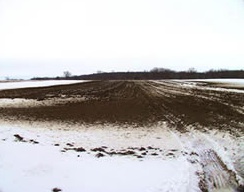
News
Take precautions when applying winter manure
January 24, 2011 by Ohio State University Extension
 NEWS HIGHLIGHT
NEWS HIGHLIGHT
Take precautions when applying winter manure
Farmers are never encouraged to spread manure or fertilizer on frozen or
snow-covered ground, but researchers know that sometimes it’s inevitable.
January 19, 2011, Ada,
Ohio – Farmers are never encouraged to spread manure or fertilizer on frozen or
snow-covered ground, but researchers know that sometimes it’s inevitable.
That’s why Robert Mullen
of the Ohio Agricultural Research and Development Center and Jon Rausch, Ohio
State University Extension educator, are presenting: How to Apply Manure and
Fertilizer to Frozen/Snow Covered Ground, If You Absolutely Have To at the 2011
Conservation Tillage and Technology Conference being held February 24 to 25 at
the McIntosh Center of Ohio Northern University in Ada.
 |
|
|
|
Early registration
(before Feb 15) is $50 for one day or $70 for both days. More information and
registration materials are available at http://ctc.osu.edu.
“We’re emphasizing ‘if
you absolutely have to’ in this presentation,” Rausch said. “Applying manure or
commercial fertilizer on frozen or snow-covered ground is never a recommended
practice.”
Doing so greatly increases
the risk of runoff events when a thaw comes, he said. Runoff means water moves
across the surface, often taking sediment and nutrients with it.
“It’s really just a
matter of time before those nutrients move off the field and end up where we
don't want them,” Rausch said.
However, producers don’t
have unlimited capacity to store manure, especially liquid manure, Rausch said.
Solid manure and commercial fertilizer is easier to store, but for various
reasons producers sometimes find themselves needing to remove it from storage
and apply it during winter months.
“Whatever the reason, it
has been done,” Rausch said.
In those cases,
producers should be cautious and think about:
- Reducing
application rates. - Surface residue
levels (higher levels generally reduce runoff rates). - Setbacks from
environmentally sensitive areas. - Slope
considerations of the application field.
Mullen and Rausch will
address all of these concerns during their presentation at 1 p.m. on February
25.
Copies of NRCS Practice
Standard 633, Waste Utilization, will be available. Participants at this
session will be eligible for credit toward Certified Livestock Manager (CLM)
recertification.